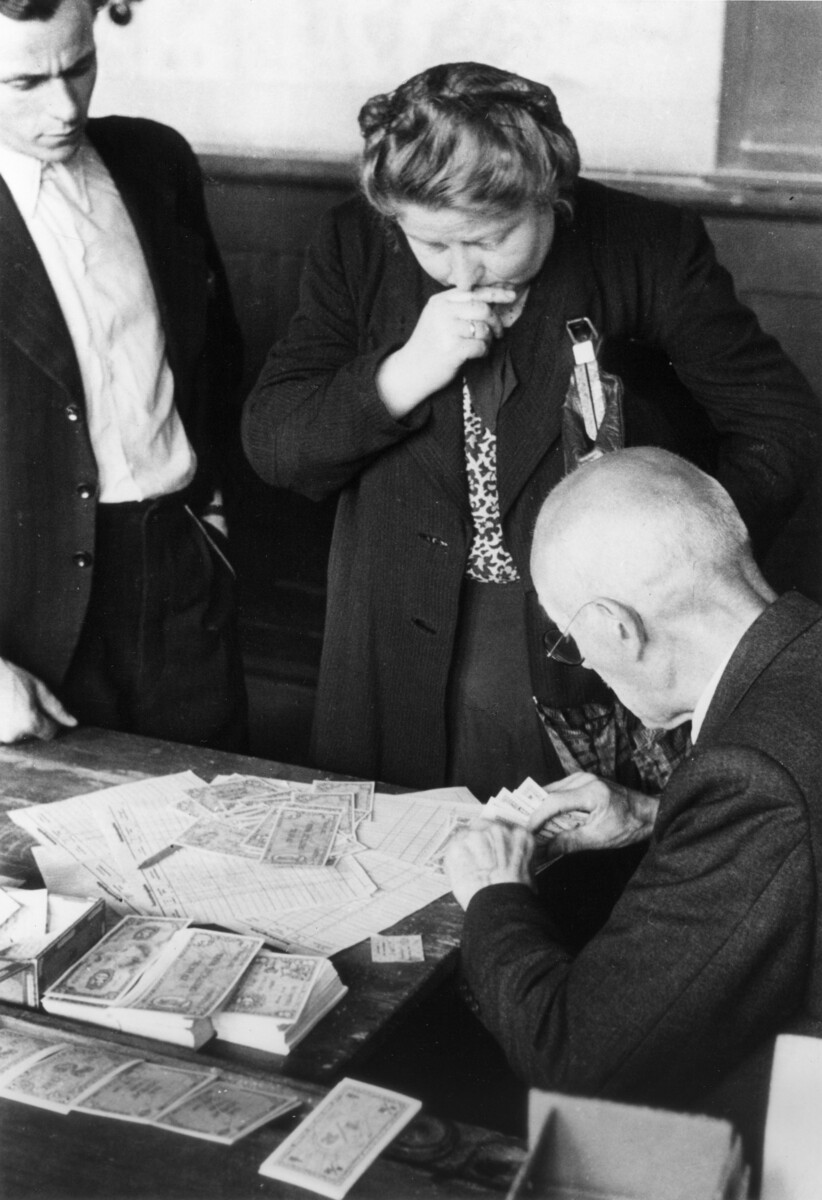Abstract
Monetary reform was urgently needed to facilitate the introduction of
the Marshall Plan, eliminate the black market, and create a more
favorable ratio between available goods and the amount of money in
circulation. The currency reform of June 20, 1948, introduced the
Deutsche Mark (DM) in the Western occupation zones. As part of its
launch, every resident was given start-up money in the amount of 40 DM.
(A second installment of 20 DM was paid out later.) The photograph below
shows the initial allotment being handed out at a disbursement site in a
Catholic school in Munich.
Simultaneous with the introduction of
the reform, Ludwig Erhard, director of economics in the Bizone,
announced measures lifting price and production controls on many items.
Products, often hidden away, appeared on shelves, and the black market
disappeared virtually overnight. Two days after the Western reform took
effect, the Soviets announced a currency reform of their own; it was to
apply to their occupation zone and to all of Berlin. Western leaders
were opposed to the inclusion of Berlin, however, and they introduced
the DM in their sectors. On June 24, 1948, the Soviets responded by
blockading the Western sectors of the city.
